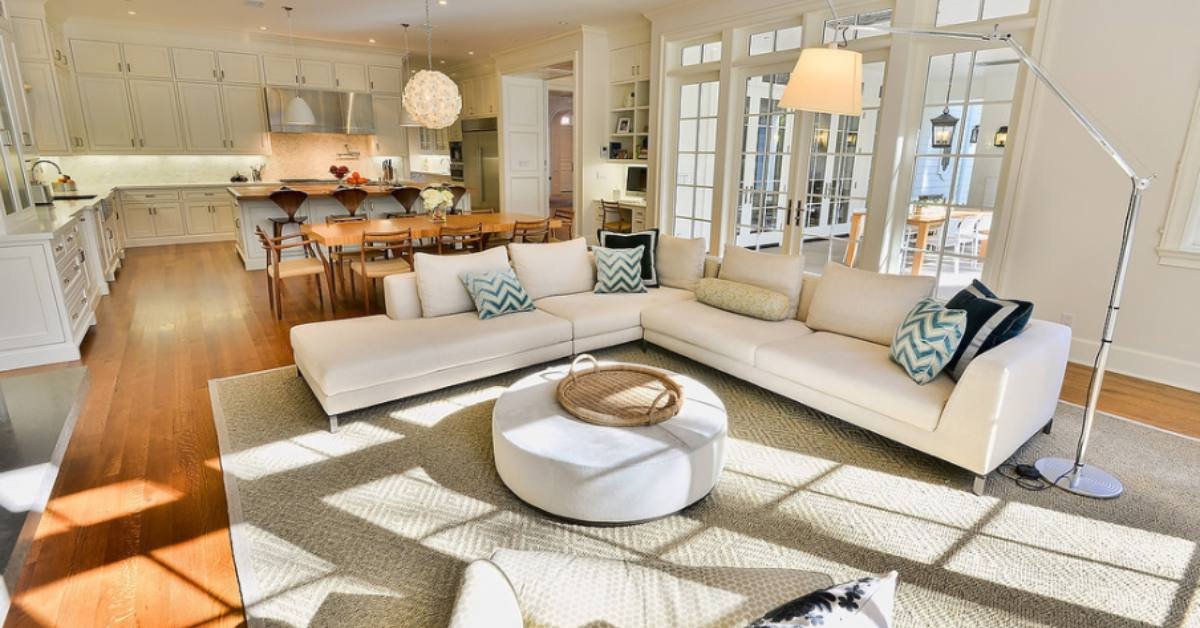Introduction
Choosing the right home design and style is a personal journey that reflects your lifestyle, preferences, and aspirations. From sleek modern aesthetics to classic traditional charm, each design carries unique elements that define a living space.
This guide will explore popular home designs and styles, highlighting their key features to help you find the perfect match for your dream home.
Modern Home Designs: Sleek and Functional
Characteristics of Modern Homes
Clean lines, open floor plans, and minimalist decor define modern homes. They prioritize functionality while incorporating innovative materials like glass, steel, and concrete.
- Open Spaces: Modern homes embrace large, open layouts encouraging seamless movement between rooms.
- Neutral Colors: A palette of whites, greys, and earth tones enhances simplicity and sophistication.
- Natural Light: Expansive windows and skylights maximize natural light, creating bright and inviting spaces.
Advantages of Modern Homes
- Energy-efficient designs with intelligent technology integration.
- A clutter-free aesthetic that appeals to minimalists.
- Adaptable spaces that suit a variety of lifestyles.
Traditional Home Designs: Timeless Elegance
Key Features of Traditional Homes
Rooted in classic architectural styles, traditional homes combine elegance with functionality. These homes are known for their symmetry, intricate details, and timeless appeal.
- Ornate Details: Common elements include crown moulding, wood panelling, and decorative columns.
- Warm and Cozy Interiors: Earthy tones and soft furnishings create inviting spaces.
- Defined Rooms: Traditional homes often feature separate dining, living, and kitchen areas.
Why Choose Traditional Homes?
- Perfect for families seeking comfort and charm.
- Durable designs that stand the test of time.
- It is a classic look that remains in style.
Contemporary Home Styles: Blending Innovation and Design
What Defines Contemporary Homes?
Contemporary homes often confuse modern designs with contemporary styles. They emphasize current trends and evolving styles. These homes are dynamic, blending form and function and focusing on sustainability.
- Eco-Friendly Materials: Bamboo, reclaimed wood, and recycled materials are commonly used.
- Unique Shapes: Contemporary homes often feature asymmetrical shapes and bold designs.
- Innovative Technology: Advanced home automation systems enhance convenience and efficiency.
Benefits of Contemporary Homes
- A forward-thinking approach to architecture and design.
- Ideal for environmentally conscious homeowners.
- Versatile spaces that cater to modern lifestyles.
Rustic and Farmhouse Styles: Embracing Nature and Simplicity
Rustic Charm in Home Design
Rustic homes are inspired by natural surroundings, incorporating organic materials and earthy tones. Farmhouse styles, a subset of rustic design, add a touch of rural simplicity.
- Natural Materials: Exposed wood beams, stone walls, and reclaimed wood furniture define rustic homes.
- Cosy Ambiance: Warm lighting and comfortable furnishings create a welcoming atmosphere.
- Farmhouse Features: Sliding barn doors, apron sinks, and wide porches are farmhouse staples.
Why Rustic and Farmhouse Styles Stand Out
- A connection to nature that promotes relaxation.
- Designs that evoke nostalgia and simplicity.
- Durable and sustainable materials.
Industrial Home Designs: Urban and Edgy
Features of Industrial Homes
Industrial homes draw inspiration from warehouses and factories, featuring raw and unfinished elements.
- Exposed Structures: Pipes, ducts, and brick walls are left visible for an edgy look.
- Metallic Finishes: Steel, iron, and other metals add to the industrial aesthetic.
- Open Layouts: Large, open spaces with high ceilings are characteristic of industrial homes.
The Appeal of Industrial Homes
- A bold and unique design that stands out.
- Perfect for urban areas and converted spaces.
- Minimalist yet striking decor.
FAQs
What is the most popular home design style today?
Modern and contemporary designs are popular due to their clean aesthetics and functional layouts.
How can I choose the right home style for my family?
Consider your lifestyle, budget, and personal preferences. Traditional homes are great for families, while modern and contemporary styles suit urban dwellers.
Are rustic homes energy-efficient?
Yes, rustic homes often use natural insulation and sustainable materials, making them energy-efficient.
Can I mix design styles in my home?
Absolutely! Mixing elements from different styles can create a personalized and eclectic space.
What is the main difference between modern and contemporary homes?
Modern homes follow a specific design era (mid-20th century), while contemporary homes adapt to current trends.
Are industrial homes expensive to build?
While industrial homes can be cost-effective due to their minimalist materials, finishing touches like metallic features can increase costs.
Conclusion
Typical home designs and styles reflect personal tastes, lifestyle needs, and architectural preferences. Whether you’re drawn to the sleek lines of modern homes, the enduring charm of traditional designs, or the raw edge of industrial styles, there’s a perfect design waiting for you. Understanding each style’s defining features and benefits allows you to create a living space that feels like home.
Whatever style you choose, ensure it aligns with your vision and enhances your quality of life. Your dream home isn’t just about aesthetics—it’s about comfort, functionality, and creating memories that last a lifetime.
Latest Post!
- The Ultimate Guide to Luxurious and Eco-Friendly Bath Products: Featuring Cunke
- Bailey Self Storage: The Secure and Convenient Storage Solution You Need
- PR Construction, LLC: Building Dream Homes with Exceptional Craftsmanship
- A Detailed Look at Lang’s Painting: Unveiling the Artistry Behind the Masterpieces
- Moving Made Easy with AMPOL Moving, Inc.: Your Trusted Illinois Partner
- WepBound: A Groundbreaking Platform Revolutionizing Digital Connectivity






